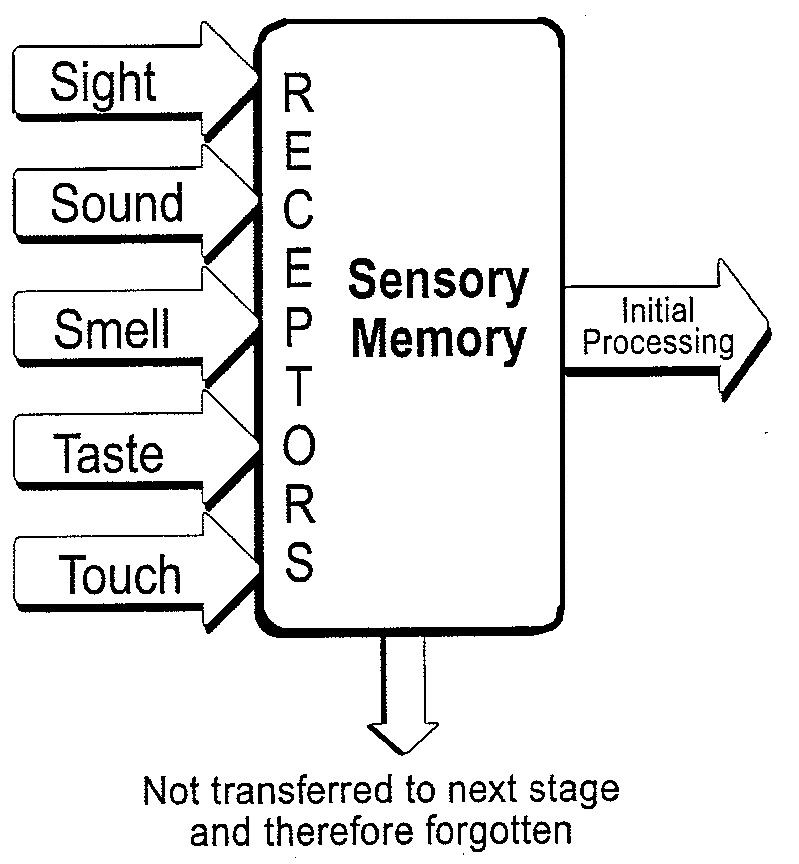When you use one of your senses — taste, touch, smell, sight, and hearing — there is a signal sent to your and the impression left after the feeling, sight, noise, taste or fragrance has gone is called your ‘sensory memory’. Take for example the feeling you got when you think of your grandmother. You recall how when she gave you a hug you smelled the lilacs from her hand cream. Years later you still remember the smell of her cream, and every time you smell lilacs it brings your grandmother to mind. That is sensory memory.
Sensory memory runs much like a transportation system, it is the initial level of your memory. Any memory that enters the brain must go through the processing center, or hub, which determines what will proceed and what will get thrown out. Because there is so much activity it is not able to hold anything there for more than a couple seconds before it needs to be passed along.
The sensory memory pays attention to the signals the information sends out so it is able to send it to the appropriate connection it needs to go to. If there is a ‘short’ in the information obviously things could go haywire and the right connection cannot be met.
Forms of Sensory Memory
The three primary forms of sensory memory are visual (iconic), auditory (echoic) and touch (haptic). Visual stimulation forms a picture in your mind. Audio memory gives us echoic memories, or mental echoes of stimulation; while haptic memory has to do with the sensations our body feels (pain, stimulation, itching, etc.). The visual and auditory are the most extensively studied, although research on the haptic portion of sensory memory is increasing with the advancement of treatments in spinal cord injury.
Iconic memory
A common, and good example of iconic memory would be to watch a child making images with a sparkler. They spin the sparkler fast and it makes designs with the ‘light trail.’ The continuous images of the letters or designs forms stimulate your visual senses. Visual information is found by the photoreceptor cells in the eyes and is sent to the occipital lobe in the brain.
Echoic memory
Auditory information is sound waves that are sensed by the hair cells in your ears and travels to the temporal lobe of the brain. Here it is able to detect changes in the environment. This has been the key to survival of any organism. These changes could be as simple as a language difference, or as the detection of some unusual activity in your surroundings that could prove to be dangerous — such as a lion in the jungle. A reduced duration of echoic memory would be delayed development in learning language skills.
Haptic memory
We have sensory receptors all over our bodies, and any touch sends off signals that travel through different neurons in the spinal cord to the ‘post central gyrus’ of the parietal lobe in the brain. Studies have found that specific neurons in the prefrontal cortex are involved in haptic memory with regards to reaction to motor response.
How sensor memory works with other parts of the memory system
Your sensory memory’s basic function is to transmit. It is not involved in type of cognitive function, and does not process any information on its own. You cannot consciously store memory in your sensory memory, and have no control as to what is stored there, or for how long. It provides the details, and it is up to other parts of the brain to determine what they want to do with them. Working memory processes the information and controls where it goes — either to short term or long-term memory.
This is Ron White, and I am a memory keynote speaker.
Sources:
Oracle Think Press — Cognitive Processes: http://library.thinkquest.org/26618/en-5.2.2=sensory%20memory.htm
Wikipedia: – Sensory Memory: http://en.wikipedia.org/wiki/Sensory_memory


